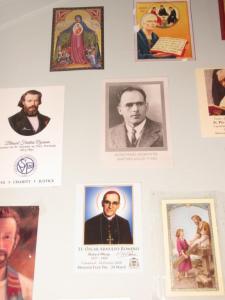This is the title of a short but compelling book by historian P.J. Geary. The thesis is simple but provocative: the narratives that drive the modern nationalist impulse (and I mean modern really only from the 18th or 19th century onwards) are based on myths. Geary deals with a key moment in European history, when the “migration of peoples” set the stage for new nations to emerge as the Roman empire faded, at least in the west. As he notes, the history of this period tends to follows a linear narrative — maps with arrows showing the different groups and where they ended up. It was this period that the latter-day romantic nationalists appealed to, justifying the occupation of a certain territory by a people that can trace a common cultural and linguistic descent from an original people from around this time. There was only one real problem: it didn’t happen that way.
As Geary points out, the Romans simply did not believe that their multicultural sophisticated society could be replicated among the “barbarians”. They thus ascribed names to the various tribes on their borders (Franks, Alemanni, Goths, Vandals, Burgundians, etc.) often using well known names in Greco-Roman history. But these societies were every bit as complicated as their Roman counterparts. There was certainly no sense of long-lasting common identity, and little evidence of mass migration. These societies were tribal in nature, and alliances constantly shifted as tribal chieftains transferred allegiance between overlords. The only real migration was of a wandering military nature, with successful warlords picking up people along the way.
As is often in these circumstances, contact with the Roman empire altered the internal dynamics of these societies. An alliance with Rome could bolster the power of a local chief significantly, inducing others to follow him. These local warlords found it in their interests to appropriate not only the names of old, but to forge a common cultural narrative that typically involved a foundation myth. What must be remembered is that this was a tool to cement the alliance of a group of otherwise disparate peoples with no sense of common belonging. Now, they would all be Franks, or Goths, of even Huns. Membership in these groups was lax and fluid. As Geary points out, the Franks of Clovis were not the Franks of Charlemagne, and they are not the people who live in the borders of what is today called France.
In fact, the Hunnish invasion presents a textbook example of this theory in action. For the while the original Huns were ethnically distinct, hailing from the central Asian plains, the Hunnish confederation was anything but. Indeed, the famous battle of the Catalaunian fields– supposedly a battle in which the Roman general Aetius destroyed the Hunnish threat once and for all– was in reality a battle between two groups of people that looked remarkably alike. For the “Visigoths” became the name of a loose alliance of those who were driven by the Hunnish alliance into the Roman empire, while the “Ostrogoths” became the group that was left behind after the Hunnish confederation collapsed. In all cases, the leaders of these groups set out not only to forge out a future for themselves in Roman lands, but also a past.
Why are these ancient tales relevant? They are relevant because they still inspire modern nationalists of all hues. Jean Marie Le Pen talks about the baptism of Clovis to justify the expulsion of Islamic immigrants from France. Slobodan Milosevic appealed to the mythic founding of the Serbian people (in reality, just one of many groups to emerge from the collapse of the Avars, and not ethnically distinct from the others) to justify a ruinous Balkan war. Today, Russians-speaking “minorities” are harassed in the Baltic states, as they do not really “belong there”. Irish children are forced to learn a dead language because it the the language of the supposed Irish nation. I could go on, but you get the idea.
In reality, “nations” have always been multiethnic, multicultural, and multilinguistic. All attempts to enforce unanimity were to further political ambitions, and had little grounding in reality. And in any event, people did see the “nation state” as an entity warranting individual loyalty– that was a distinctly later innovation. Historically, loyalty was to kin, tribe, overlord, guild, church etc.– a multifaceted and overlapping set of loyalties.
There are lessons here for the United States too, not just Europe. For the United States has also bought into the myth of nations, although not a race-based myth. Still, the emphasis is on a single history, a single culture, and a single language. There is even a version of a founding myth with George Washington stepping in for Clovis or Alboin. We can see this in action. Witness the palpable uneasiness with immigration from countries whose peoples simply refuse to “assimilate” to the degree required by the national narrative. Witness the glorification (almost deification) of the nation itself and its founding myths. It’s all based on a false notion of what a nation was — and indeed, should be.












